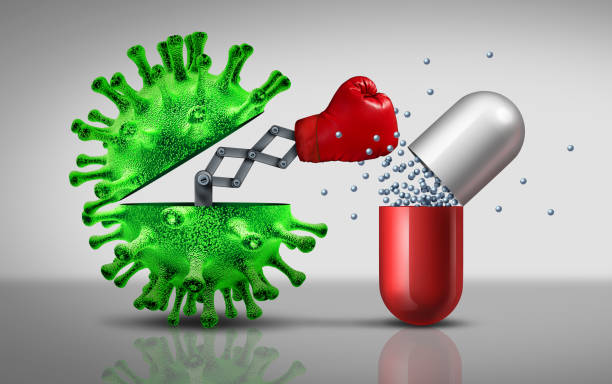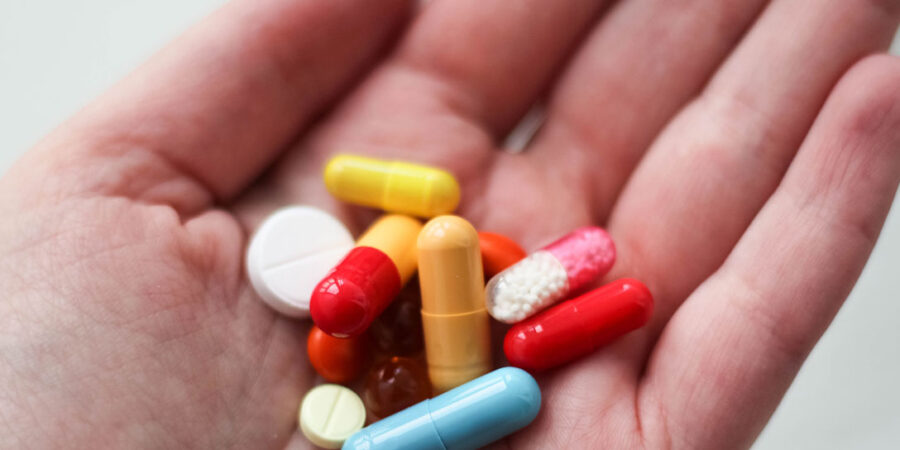Do anti-depressants contribute to superinfections?
If one was to consider the marketing billboard of medications, the impact on medical history can be felt in different ways. Some pills literally become pop stars of pills, with global name recognition and hordes of groupies. Towering and life-saving older legends like penicillin originated from a humble mould that grew on Alexander Fleming’s messy desk. And who hasn’t heard of Viagra, a failed angina medication that became the legendary champion of manufactured libido, now being re-booted for women in the spirit of gender equality. Prozac evolved in the era when the pursuit of everyday happiness—natural or not—was being promoted and commercialised by pharmaceutical giants to us minions of mainstream society. At its peak, Prozac was the most prescribed drug in Western countries, and was honoured with being featured on the cover of TIME magazine. AP news reported that Prozac in 1997 was one of the most widely prescribed drugs in history with sales of $2.36 billion, a third of Lilly’s revenue that year.
 Increasingly, the practice of medicine is becoming caught between its past as a healing art to a modern industry-led science. Once we ate food because we needed sustenance for survival; now we eat because—with myriad choices and artful cuisines—we can. Now more people in the world die of diseases of plenty rather than poverty. Diseases of over-nutrition have trumped malnourishment. According to a report published in 2012 by New Scientist that discussed The Global Burden of Disease report—a project involving 500 scientists in 50 countries—overeating had become a bigger global problem than lack of food.
Increasingly, the practice of medicine is becoming caught between its past as a healing art to a modern industry-led science. Once we ate food because we needed sustenance for survival; now we eat because—with myriad choices and artful cuisines—we can. Now more people in the world die of diseases of plenty rather than poverty. Diseases of over-nutrition have trumped malnourishment. According to a report published in 2012 by New Scientist that discussed The Global Burden of Disease report—a project involving 500 scientists in 50 countries—overeating had become a bigger global problem than lack of food.
In the spirit of the scala naturae of evolution, we humans carry numerous critters on our bodies. In fact only 43 percent of our DNA is exclusive to us. Bacteria live on and under our skin, barricading barriers, and repelling intruders to our microbiological ecosystem.
The concept of social networks is not confined to humans. In fact, primitive creatures like bacteria build social networks of resistant communities held together by proteins, polysaccharide sugars and extracellular DNA. Studies show that bacteria living above such biofilms are over 100 times susceptible to antibiotics than those within biofilms. On skin, the bacterium Staphylococcus aureus is an important biofilm-maker, and given an opportunity, it can run amok. This bacterium is a commensal i.e., everyone has Staph aureus growing on their skin. Philosophically, I believe in treating the patient, and not purely the lab results, so I am not a fan of swabbing wounds for bacterial cultures unless it is going to change my treatment as most skin infections are due to Staph aureus anyway—when this commensal, a naturally occurring bacterium, overgrows due to changes in the local skin environment or a weakened immune system. This bacterium that is found on our skin and mucous membranes can be dangerous when it forms biofilms and result in severe sepsis needing intensive care or the removal of implanted devices. Therefore sometimes you do need to use antibiotics systemically i.e., via tablets or injections.
Antibiotics filled with technology to bust bacterial cell walls or stop microbes multiplying have fortified medical armoury for a century. But now they are creating problems in our naturally present biofilms and microbiomes. Today antibiotic resistance is an increasing health hazard. With antibiotic powders in animal feeds, and antibiotic tablets widely overprescribed, antibiotic resistance results in more than 700,000 deaths globally.

Human beings created antibiotics a century ago. Prior to that a simple cut on your foot could mean an early death. Antibiotics therefore were a true medical miracle. But biological ecosystems were presented with a conundrum. Normal bacteria need to grow on our bodies, and killing these friendly microbes means that our barrier organs such as skin and gut become unfit for purpose and need time to recover. The chemical violence induced by antibiotics ended up far nastier than we realised. Medicine was left with its own conundrum—how do we cure people from infections without inflicting harm? Could we develop weaker antibiotics?
Recently, research showed that antidepressant medications have a weak antibiotic effect. All three classes of antidepressants have antimicrobial activity against various bacteria and yeasts. Therefore, reports –-from pharmaceutical research companies, the masters of finding new purpose for old drugs—suggested that these antidepressants could be redesigned into weaker antibiotics, thereby resulting in less antibiotic resistance. We were discussing Staph aureus earlier. Methicillin-resistant Staph aureus (MRSA) has been an issue in New Zealand and internationally. Tricyclic antidepressants (drugs in the same group as amitriptyline, nortriptyline, and doxepin) have been shown to re-sensitise methicillin-resistant Staph aureus (MRSA) to β-lactam i.e., make this bacterium more susceptible to traditional antibiotics.

However, this approach of trying to develop antidepressants into newer antibiotics may be pure pharmaceutical glee, an anxious self-endorsement of sorts. It seems we are saying—let’s turn the antimicrobial volume down. But the fundamental biological interaction between host and parasite is what underpins our very existence and health.
Therefore, if we now know that antidepressants have had antibiotic activity, have all these years of use for depression and anxiety affected the narrative? They have. A new report in the prestigious Nature journal noted that researchers had identified another—i.e., other than animal feeds and human overuse—potential driver of bacterial resistance to antibiotics: antidepressants. Another recent report echoed this finding, and explained the mechanism: commonly prescribed antidepressants, sertraline, duloxetine, fluoxetine, and bupropion, cause the transfer of multidrug resistance genes carried by clinically relevant plasmids (basically bacterial DNA). The authors highlighted the importance of prudent prescription of antidepressants in the future because of this possible connection between antidepressants and increasing antibiotic resistance.
“What else did you expect?”, biology seems to shout. For every action, there is an opposing reaction. The ballet of biology is full of microbial groups, cellular battles, and improvisational solos performed by diva drugs. And the audience—our bodies—feels the theatrical performances in each interlinked cell of our beings.
THE END
IMPORTANT: This blog is about science-communication, education, interesting science, and new medical research to do with (mostly) health and skin. It is not individual one-on-one medical advice. Please do not stop any medications without consulting your own doctor.
Written By
Dr Sharad Paul
Dr Sharad Paul is an award winning, world renowned recognised skin-cancer expert and thought-leader.






